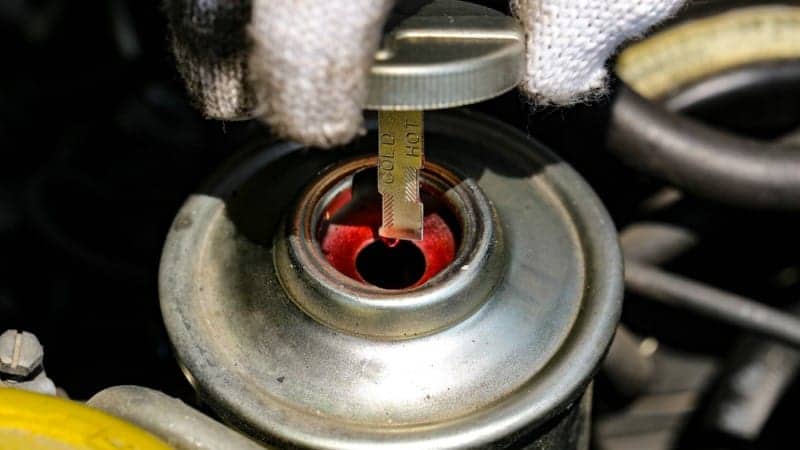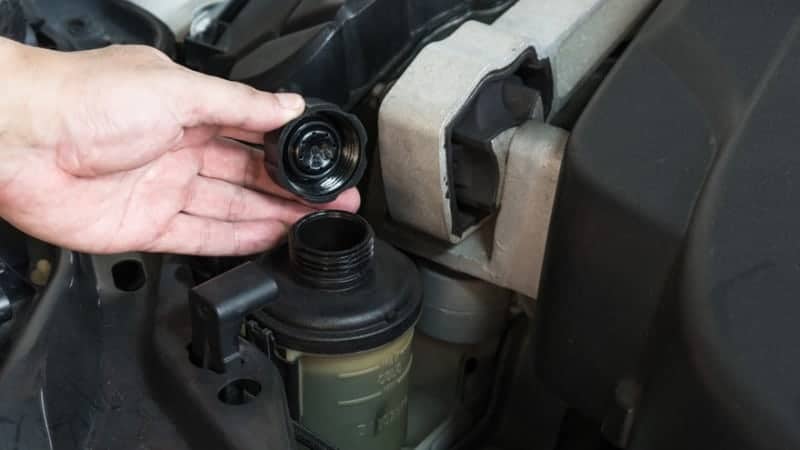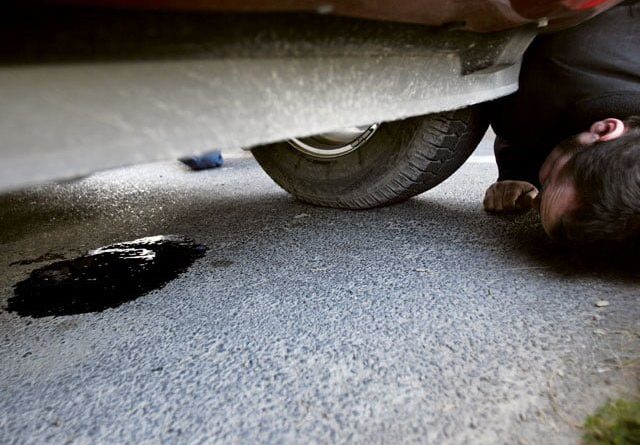Is Your Car’s Power Steering Fluid Bubbling? Here’s What to Do
Power steering fluid is a vital component in a car’s steering system. It helps to provide the necessary hydraulic pressure to assist in turning the wheels, making it easier for the driver to maneuver the vehicle. Without power steering fluid, steering a car would require much more effort and could be dangerous, especially at higher speeds. In this article, we will explore the importance of power steering fluid, common causes of bubbling power steering fluid, how to identify it, the dangers of ignoring it, steps to take when you notice it, and tips for preventing it.
Understanding Power Steering Fluid and Its Importance in Your Car
Power steering fluid is a hydraulic fluid that is specifically designed for use in power steering systems. It is responsible for transmitting power from the engine to the steering mechanism, allowing the driver to turn the wheels with ease. The fluid acts as a lubricant and coolant for the power steering pump and other components, preventing them from overheating and wearing out prematurely.
The importance of power steering fluid in a car’s steering system cannot be overstated. Without it, the power steering system would not function properly, making it extremely difficult for the driver to turn the wheels. This could lead to accidents and make driving unsafe. Additionally, power steering fluid helps to reduce wear and tear on the power steering pump and other components, prolonging their lifespan and reducing the likelihood of costly repairs.
There are different types of power steering fluid available on the market, including mineral-based fluids, synthetic fluids, and specialty fluids for specific car models. It is important to use the correct type of power steering fluid recommended by the car manufacturer to ensure optimal performance and prevent damage to the system.
Common Causes of Bubbling Power Steering Fluid
Bubbling power steering fluid can be caused by several factors. One common cause is overheating of the power steering system. When the system becomes too hot, air bubbles can form in the fluid, causing it to bubble. This can be caused by a malfunctioning power steering pump, a blocked or restricted power steering cooler, or low fluid levels.
Another common cause of bubbling power steering fluid is contamination of the fluid. Contaminants such as dirt, debris, or metal shavings can get into the system and cause the fluid to bubble. This can happen if the power steering reservoir or hoses are not properly sealed or if the fluid is not regularly flushed and replaced.
Air in the power steering system can also cause the fluid to bubble. This can occur if there is a leak in the system, allowing air to enter. Air bubbles in the fluid can disrupt the hydraulic pressure and make it difficult for the power steering system to function properly.
How to Identify Bubbling Power Steering Fluid

Bubbling power steering fluid can be identified through visual signs and strange noises coming from the power steering system. Visually, you may notice bubbles or foam in the power steering reservoir or in the fluid itself. The fluid may also appear milky or discolored, indicating contamination.
Strange noises coming from the power steering system can also indicate bubbling power steering fluid. You may hear a whining or groaning noise when turning the wheel, which could be caused by air bubbles in the fluid. Additionally, you may notice a loss of power assist when turning the wheel, making it more difficult to steer.
The Dangers of Ignoring Bubbling Power Steering Fluid
Ignoring bubbling power steering fluid can have serious consequences for both your car and your safety while driving. One of the dangers is damage to the power steering system itself. Bubbling fluid can cause increased wear and tear on the power steering pump and other components, leading to premature failure and costly repairs.
Difficulty in steering the car is another danger of ignoring bubbling power steering fluid. As the bubbles disrupt the hydraulic pressure, it becomes harder to turn the wheels, especially at low speeds or when parking. This can make driving more challenging and increase the risk of accidents.
Ignoring bubbling power steering fluid also poses safety risks while driving. If the power steering system fails completely, it can be extremely difficult to steer the car, especially at higher speeds. This can lead to loss of control and potentially result in a serious accident.
Steps to Take When You Notice Bubbling Power Steering Fluid
If you notice bubbling power steering fluid in your car, it is important to take immediate action to prevent further damage and ensure your safety. Here are the steps you should take:
- Stop driving the car immediately: Continuing to drive with bubbling power steering fluid can cause further damage to the system and increase the risk of accidents. Pull over to a safe location and turn off the engine.
- Check the power steering fluid level: Open the hood of your car and locate the power steering reservoir. Check the fluid level using the dipstick or level indicator on the reservoir. If the fluid level is low, it may indicate a leak in the system.
- Inspect the power steering system for leaks or damage: Look for any signs of leaks or damage in the power steering system, such as wet spots or puddles under the car, loose or damaged hoses, or a damaged power steering pump. If you notice any leaks or damage, it is best to have it inspected and repaired by a professional.
- Flush and replace the power steering fluid: If there are no visible leaks or damage, but the fluid is still bubbling, it may be necessary to flush and replace the power steering fluid. This can help remove any contaminants or air bubbles that may be causing the issue. It is recommended to have this done by a professional mechanic.
Can You Fix Bubbling Power Steering Fluid Yourself?
In some cases, you may be able to fix bubbling power steering fluid yourself, depending on the cause of the issue. However, it is important to note that power steering systems can be complex and require specialized knowledge and tools to repair properly. If you are not confident in your abilities or if the issue persists after attempting DIY methods, it is best to seek professional help.
Some DIY methods for fixing bubbling power steering fluid include:
- Checking and tightening any loose or damaged hoses in the power steering system.
- Flushing and replacing the power steering fluid to remove any contaminants or air bubbles.
- Bleeding the power steering system to remove any trapped air.
It is important to follow the manufacturer’s instructions and use the correct tools and fluids when attempting DIY repairs. If you are unsure or uncomfortable with any step of the process, it is best to consult a professional mechanic.
How to Check Your Car’s Power Steering Fluid Level
Checking your car’s power steering fluid level is a simple process that can be done regularly as part of your car maintenance routine. Here is a step-by-step guide on how to check the power steering fluid level:
- Park your car on a level surface and turn off the engine.
- Open the hood of your car and locate the power steering reservoir. It is usually located near the front of the engine compartment and has a cap labeled “Power Steering.”
- Remove the cap from the reservoir and wipe off any dirt or debris from the dipstick or level indicator.
- Insert the dipstick or level indicator back into the reservoir and then remove it again to check the fluid level. The dipstick will have markings indicating the minimum and maximum levels. The fluid should be between these two marks.
- If the fluid level is low, add more power steering fluid until it reaches the correct level. Be careful not to overfill, as this can cause issues with the power steering system.
- Replace the cap on the reservoir and close the hood of your car.
It is important to check the power steering fluid level regularly and top it up as needed to ensure optimal performance of the power steering system.
Tips for Preventing Bubbling Power Steering Fluid
Preventing bubbling power steering fluid is essential for maintaining the health and longevity of your car’s power steering system. Here are some tips to help prevent this issue:
- Regular maintenance of the power steering system: Follow the manufacturer’s recommended maintenance schedule for your car’s power steering system. This may include regular fluid flushes and replacements, as well as inspections for leaks or damage.
- Using the right type of power steering fluid: Always use the correct type of power steering fluid recommended by the car manufacturer. Using the wrong type of fluid can cause damage to the system and lead to bubbling or other issues.
- Avoiding overheating of the power steering system: Be mindful of driving conditions that can cause the power steering system to overheat, such as driving at high speeds for extended periods or towing heavy loads. If you notice any signs of overheating, such as a burning smell or bubbling fluid, pull over and allow the system to cool down before continuing.
- Regularly inspecting the power steering system for leaks or damage: Check for any signs of leaks or damage in the power steering system, such as wet spots or puddles under the car, loose or damaged hoses, or a damaged power steering pump. If you notice any issues, have them inspected and repaired by a professional.
By following these tips, you can help prevent bubbling power steering fluid and ensure that your car’s power steering system remains in good working condition.
Choosing the Right Power Steering Fluid for Your Car
Choosing the right power steering fluid for your car is crucial to ensure optimal performance and prevent damage to the system. Here are some factors to consider when choosing power steering fluid:
- Car manufacturer’s recommendations: Always refer to the car manufacturer’s recommendations for the correct type of power steering fluid to use. This information can usually be found in the owner’s manual or on the manufacturer’s website.
- Type of power steering system: Different types of power steering systems may require different types of fluid. For example, some cars may require mineral-based fluids, while others may require synthetic fluids. It is important to use the correct type of fluid to prevent damage to the system.
- Specialty fluids for specific car models: Some car manufacturers may recommend using specialty power steering fluids for certain car models. These fluids are specifically formulated to meet the unique requirements of those vehicles and can help optimize performance and prevent issues.
It is important to note that using the wrong type of power steering fluid can cause damage to the system and lead to bubbling or other issues. If you are unsure about which type of fluid to use, consult the car manufacturer or a professional mechanic for guidance.
When to Seek Professional Help for Bubbling Power Steering Fluid

While there are DIY methods for fixing bubbling power steering fluid, there are certain situations where it is best to seek professional help. Here are some signs that indicate the need for professional assistance:
- The issue persists after attempting DIY repairs: If you have followed all the recommended DIY methods for fixing bubbling power steering fluid and the issue persists, it is best to have a professional mechanic inspect and repair the system.
- Visible leaks or damage in the power steering system: If you notice any visible leaks or damage in the power steering system, it is important to have it inspected and repaired by a professional. Leaks or damage can indicate more serious issues that require professional expertise.
- Loss of power assist or difficulty in steering: If you experience a loss of power assist or difficulty in steering, it is crucial to have the power steering system checked by a professional immediately. These issues can indicate a serious problem that needs to be addressed promptly to ensure your safety while driving.
It is always better to err on the side of caution and seek professional help if you are unsure about how to fix bubbling power steering fluid or if the issue persists after attempting DIY repairs.
Conclusion
Power steering fluid plays a crucial role in a car’s steering system, providing the necessary hydraulic pressure to assist in turning the wheels. Bubbling power steering fluid can be caused by overheating, contamination, or air in the system. Ignoring this issue can lead to damage to the power steering system, difficulty in steering, and safety risks while driving.
When you notice bubbling power steering fluid, it is important to take immediate action. Stop driving the car, check the fluid level, inspect the system for leaks or damage, and flush and replace the fluid if necessary. While there are DIY methods for fixing this issue, it is best to seek professional help if you are unsure or if the issue persists.
Regular maintenance and proper care of the power steering system are essential for preventing bubbling power steering fluid. This includes using the right type of fluid, avoiding overheating, and regularly inspecting the system for leaks or damage. By following these tips and seeking professional help when needed, you can ensure that your car’s power steering system remains in good working condition and prevent issues like bubbling power steering fluid.
